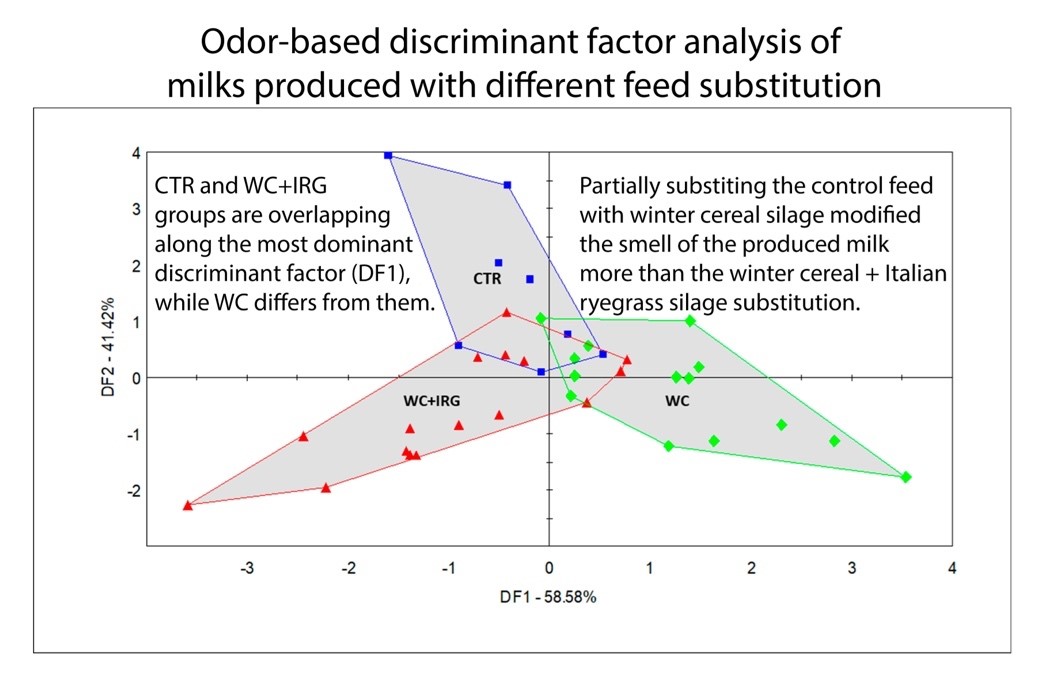The increasingly frequent use of new feed sources makes it necessary to investigate the effect of different feeds on milk quality. We carried out research based on fatty acid analysis and aroma profile analysis, during which we compared the milk of cows fed with new mixed silages available on the market with the milk of a control group consuming feed with a composition common in domestic practice. We published our article summarizing the results of the research in the scientific journal Agriculture.
Feeding mixed silages of winter cereals and Italian ryegrass can modify the fatty acid and odor profile of bovine milk
Haruna Gado Yakubu, Omeralfaroug Ali, András Szabó, Tamás Tóth, George Bazar
The utilization of corn silage in animal diets is becoming a challenge, due to the crop’s reduced yield as a result of climate change. Alternative silage types, such as mixtures of Italian ryegrass and winter cereals, may be a good complement to corn silage in diet formulation. Therefore, it is important to investigate how these alternative sources influence milk fatty acid and odor profile, as well as how these quality parameters could be efficiently evaluated. In this study, a corn silage-based control (CTR) and four experimental (EXP) diets—which contained winter cereals (WC), as well as WC with Italian ryegrass (IRG) silages in different proportions—were fed to Holstein-Friesian cows (n = 32) in a single-blinded efficacy study during a series of 4-week periods, with 2 weeks of adaption to each feed before the main trial. Milk from each trial was subjected to fatty acid (FA) analysis and odor profiling through the utilization of gas chromatography and an electronic nose, respectively. The results show that milk FAs in the EXP-3 and EXP-4 groups (which contained mixed silages using WC) changed the most when compared with other groups. Moreover, with a 7 kg/day inclusion rate of WC+IRG and of the WC silages in the diets of the EXP-2 and EXP-3 groups, respectively, the milk from these groups had their n6:n3 ratio reduced, thus indicating possible health benefits to consumers. The odor variation between the milk of the WC+IRG and WC groups was greater than the variation between the milk of the CTR and EXP groups. The main volatile compound responsible for the odor of the CTR milk was ethyl-butyrate, whereas 2-propanol and butan-2-one dominated the WC milk; the milk samples of the WC+IRG groups were influenced largely by ethanol. The study proved that with a 7 kg/day inclusion of mixed silages including winter cereals plus Italian ryegrass, the FA and odor profile of bovine milk could be modified.

Access the full paper free of charge on the website of the journal:
